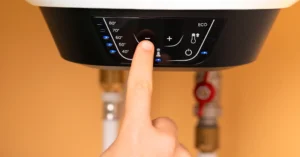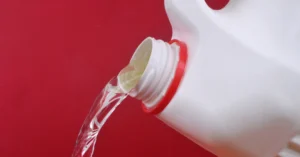You’ve finally decided it’s time to address your home’s aging plumbing system. Perhaps you’re tired of dealing with pinhole leaks, discolored water, or decreasing water pressure. Now you’re facing an important decision: which piping material is best for your San Diego home?
For decades, copper was the gold standard for residential plumbing. But in recent years, PEX (cross-linked polyethylene) has emerged as a popular alternative that many homeowners and plumbers prefer. After 20 years of serving homes throughout San Diego County, we’ve developed extensive experience with both materials and understand how they perform in our unique local conditions.
In this comprehensive guide, you’ll discover the pros and cons of copper and PEX piping specifically for San Diego homes, how local water conditions affect each material, and which option might be best for your particular situation and neighborhood.
Understanding San Diego’s Unique Plumbing Environment
Before comparing piping materials, it’s essential to understand the specific challenges that San Diego’s environment presents for residential plumbing systems.
Hard Water Considerations
San Diego’s water supply contains high levels of dissolved minerals, particularly calcium and magnesium, making it among the hardest in the nation. Our technicians regularly measure hardness levels between 200-300 parts per million throughout the county, with some areas experiencing even higher concentrations.
This mineral-rich water creates unique challenges for plumbing systems. As water flows through pipes, these minerals can accumulate on interior surfaces, gradually restricting flow and potentially accelerating corrosion in certain materials. Any comparison of piping options must account for how each material handles these mineral deposits over time.
Soil Composition and Seismic Activity
San Diego County features diverse soil types that can affect underground plumbing differently. Coastal areas often have sandy, salt-laden soils that can be corrosive to certain metals. Inland areas frequently contain clay soils that expand and contract with moisture changes, potentially stressing rigid piping systems.
Additionally, our region’s seismic activity creates subtle but constant ground movement that places stress on plumbing connections and runs. Even minor earthquakes that residents barely notice can affect rigid plumbing systems over time. The flexibility and connection methods of different piping materials become particularly important in this environment.
Temperature Fluctuations and UV Exposure
While San Diego enjoys a relatively mild climate compared to much of the country, we still experience significant temperature variations that affect plumbing. Coastal temperature swings between cool mornings and warm afternoons cause pipes to expand and contract daily. Inland areas like El Cajon, Poway, and Escondido experience even more dramatic temperature differences between seasons.
For homes with exterior plumbing components, San Diego’s intense sunlight presents another consideration. Our region receives among the highest UV radiation levels in the United States, which can degrade certain materials over time if they’re not properly protected.
Copper Piping: The Traditional Standard
For many decades, copper was the undisputed premium choice for residential plumbing throughout San Diego County. Let’s examine its characteristics in our local context.
Advantages of Copper in San Diego Homes
Copper offers several significant benefits that have made it a trusted material for generations:
– Proven longevity: Properly installed copper systems regularly last 50+ years in San Diego homes, with many still functioning after 70+ years in our oldest neighborhoods.
– Biostatic properties: Copper naturally inhibits bacterial growth, an important health consideration for drinking water systems.
– Heat resistance: Copper handles hot water exceptionally well without degrading, maintaining consistent performance regardless of water temperature.
– Recyclability: For environmentally conscious San Diego homeowners, copper’s 100% recyclability represents a sustainable choice that maintains value.
– Fire resistance: In wildfire-prone areas like Rancho Santa Fe, Ramona, and eastern San Diego County, copper’s non-combustible nature provides additional safety.
Our oldest and most prestigious neighborhoods, including La Jolla, Mission Hills, and Kensington, predominantly feature copper plumbing systems that have performed reliably for decades.
Disadvantages of Copper in San Diego’s Environment
Despite its strengths, copper faces specific challenges in our region:
– Susceptibility to pinhole leaks: San Diego’s hard water can contribute to pitting corrosion that eventually creates pinhole leaks, particularly in hot water lines. We’ve observed this issue most frequently in homes built between 1970-1990 in communities like Clairemont, University City, and Mira Mesa.
– Higher material cost: Copper typically costs 2-3 times more than PEX for materials alone, making whole-house repiping projects significantly more expensive.
– Installation complexity: Copper requires skilled soldering at each joint, increasing labor costs and installation time. In older San Diego homes with limited access spaces, this complexity can substantially increase project duration and expense.
– Noise issues: Water flowing through copper pipes creates more noise than through PEX, a consideration in multi-story homes or properties with pipes running through living spaces.
– Freezing vulnerability: Though rare in San Diego, occasional freezing temperatures in inland and mountain communities can cause copper pipes to burst if not properly insulated.
These disadvantages have led many homeowners to consider alternative materials when repiping their San Diego properties.
Long-term Performance in San Diego Conditions
Our 20 years of experience with copper plumbing throughout San Diego County has given us valuable insights into its long-term performance:
– Coastal considerations: In coastal communities from Oceanside to Imperial Beach, copper’s interaction with salt air can accelerate external corrosion if pipes are exposed. Proper installation with appropriate protective coatings is essential in these areas.
– Water chemistry effects: Neighborhoods with particularly hard water, such as Rancho Bernardo and Poway, often see accelerated internal corrosion in copper systems. Water treatment systems can significantly extend copper pipe lifespan in these areas.
– Seismic resilience: During San Diego’s occasional earthquakes, copper’s rigid nature makes it more vulnerable to damage at connection points. Proper installation with expansion joints and flexible connectors helps mitigate this risk.
– Retrofit considerations: When adding copper to existing systems in older San Diego homes, dielectric unions are essential to prevent galvanic corrosion where copper connects to different metals.
For many San Diego homeowners, these performance characteristics must be weighed against the alternatives when making repiping decisions.
PEX Piping: The Modern Alternative
PEX has rapidly gained popularity in San Diego over the past decade, becoming the material of choice for many new construction projects and repiping jobs. Let’s examine how it performs in our specific regional conditions.
Advantages of PEX in San Diego Homes
PEX offers several compelling benefits that address many of San Diego’s unique plumbing challenges:
– Flexibility and seismic resistance: PEX’s ability to flex and bend makes it naturally resistant to earthquake damage, a significant advantage in our seismically active region. This flexibility also allows it to expand slightly during freezing conditions without bursting, beneficial for homes in Julian, Alpine, and other areas that occasionally experience below-freezing temperatures.
– Resistance to mineral buildup: PEX’s smooth interior surface reduces the accumulation of mineral deposits from San Diego’s hard water, helping maintain consistent flow rates over time. Our flow testing in homes with 10+ year old PEX systems shows minimal reduction in diameter compared to copper pipes of similar age.
– Quieter operation: Water flowing through PEX creates significantly less noise than through copper, an advantage in San Diego’s open-concept homes where plumbing noise can be particularly noticeable.
– Lower material cost: PEX typically costs 1/3 to 1/2 the price of copper for materials alone, making whole-house repiping more affordable for many San Diego homeowners.
– Faster installation: PEX’s flexibility and simpler connection methods reduce installation time by 50-75% compared to copper, minimizing disruption during repiping projects.
These advantages have made PEX particularly popular in San Diego’s newer communities like 4S Ranch, Del Sur, and Otay Ranch, as well as in repiping projects throughout the county.
Disadvantages of PEX in Southern California
Despite its benefits, PEX has limitations that should be considered:
– UV vulnerability: PEX degrades when exposed to sunlight, a significant concern in sunny San Diego. Any exterior PEX must be properly shielded or covered to prevent UV damage. This is particularly important in homes with exposed plumbing in outdoor living spaces, common in our indoor-outdoor lifestyle.
– Rodent attraction: In some cases, rodents appear attracted to PEX and may chew through it. This can be problematic in canyon-adjacent neighborhoods like Mission Valley, Tierrasanta, and parts of La Jolla where rodent pressure is higher.
– Environmental considerations: Unlike copper, PEX is not recyclable at end of life, a drawback for environmentally conscious San Diego homeowners.
– Potential water quality concerns: Some homeowners report taste differences with PEX, particularly when first installed. While modern PEX is certified for drinking water safety, this subjective difference matters to some households.
– Code and HOA restrictions: Some older San Diego communities and homeowners associations still have restrictions on PEX usage, requiring variance applications or exceptions.
Understanding these limitations helps homeowners make informed decisions about whether PEX is appropriate for their specific situation.
Long-term Performance in San Diego Conditions
With PEX now installed in San Diego homes for over 20 years, we’ve gathered valuable data on its long-term performance in our unique conditions:
– Chlorine interaction: San Diego’s municipal water contains chlorine for disinfection, which can potentially degrade certain types of PEX over very long periods. Modern PEX-B and PEX-C formulations show excellent chlorine resistance in our testing and real-world installations.
– Temperature stability: In San Diego’s inland communities where attic temperatures can exceed 140°F during summer heat waves, high-quality PEX maintains its integrity without softening or deforming.
– Connection reliability: The most common point of failure in PEX systems is at connections rather than in the tubing itself. Professional installation with proper tools and techniques is essential for long-term reliability.
– System design considerations: PEX’s flexibility allows for fewer joints and “home run” configurations that provide better pressure and temperature control throughout San Diego homes.
These performance characteristics make PEX a compelling option for many San Diego repiping projects, particularly when installed by experienced professionals familiar with our local conditions.
Comparative Analysis for San Diego Homeowners
When deciding between copper and PEX for your San Diego home, several key factors should influence your decision.
Installation Considerations in Different Home Types
The age and construction of your San Diego home significantly impacts which material might be more practical:
– Historic homes: In designated historic districts like Old Town, Mission Hills, or Burlingame, copper often proves easier to integrate with existing systems while maintaining historical integrity. Its traditional appearance also complements the aesthetic of these homes when pipes are visible.
– Mid-century homes: For the many mid-century modern homes in neighborhoods like La Mesa, Allied Gardens, and Clairemont, PEX’s flexibility makes it ideal for retrofitting through existing walls and crawl spaces with minimal demolition.
– Slab foundation homes: In slab-on-grade construction common throughout much of San Diego County, PEX’s flexibility allows for rerouting through attics and walls rather than breaking through concrete, significantly reducing project complexity and cost.
– Multi-story homes: In two-story homes common in communities like Carmel Valley, Scripps Ranch, and Eastlake, PEX’s quieter operation reduces the noise of water moving through pipes between floors.
The physical characteristics of your specific home may make one material significantly more practical than the other.
Cost Analysis: Beyond Material Prices
While PEX materials cost less than copper, a complete cost analysis should consider several factors:
– Installation labor: Copper installation typically requires 2-3 times more labor hours than PEX due to the cutting, fitting, and soldering required at each connection point. In San Diego’s high labor cost market, this difference can be substantial.
– Demolition and repair: Copper often requires more extensive wall and ceiling opening for installation, increasing associated demolition and repair costs. In homes with custom finishes, these restoration costs can be significant.
– System design: PEX allows for “home run” configurations that use more total piping but fewer fittings, changing the material cost equation while providing performance benefits.
– Long-term value: Copper’s recyclability gives it residual value that PEX lacks, a consideration for long-term property ownership.
For a typical 2,000 square foot San Diego home, our project data shows complete repiping costs averaging $8,000-$12,000 for PEX versus $15,000-$25,000 for copper, though individual circumstances can vary significantly.
Water Quality Factors in Different San Diego Regions
San Diego County’s water quality varies by region, affecting material performance:
– Coastal areas: Communities receiving water from the Carlsbad Desalination Plant typically have lower mineral content, reducing concerns about internal corrosion in copper pipes.
– East County: Areas served by the Helix Water District often experience higher mineral content, potentially making PEX’s resistance to scaling more valuable.
– Well water properties: For homes in Ramona, Valley Center, and other areas using well water, water chemistry testing should guide material selection, as certain well water characteristics can be particularly aggressive toward copper.
– Future water sources: As San Diego continues developing new water sources, including increased recycled water, the chemical composition of municipal water may change over time, potentially affecting long-term material performance.
Understanding your specific water source helps predict how different piping materials will perform in your home over decades of use.
Hybrid Systems: The Best of Both Worlds?
Many San Diego homes now utilize hybrid systems that leverage the strengths of both materials in different applications.
Strategic Material Placement
- Copper near water heaters, where high temperatures and local code requirements often make it the preferred choice
- PEX for retrofits in finished walls, ceilings, and tight crawl spaces, minimizing demolition
This hybrid approach gives San Diego homeowners the best of both worlds: the durability and tradition of copper where it matters, and the flexibility and efficiency of PEX where it’s most beneficial.
Choosing the Right Material for Your Repiping Project
There’s no one-size-fits-all answer when it comes to repiping in San Diego. Your choice between copper and PEX should reflect your home’s age, layout, water quality, future renovation plans, and budget. What matters most is having a licensed plumber who understands the pros and cons of each system—and how those pros and cons play out in San Diego’s specific plumbing environment.
At Solid Plumbing & Drains Inc., we’ve spent over 20 years helping homeowners throughout the county make smart, long-term plumbing decisions. Whether you’re planning a full home repipe or need advice on partial upgrades, we’re here to help.




